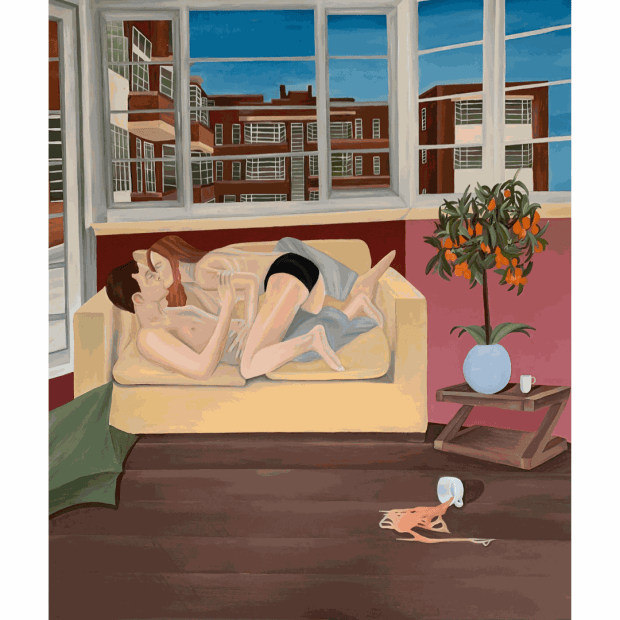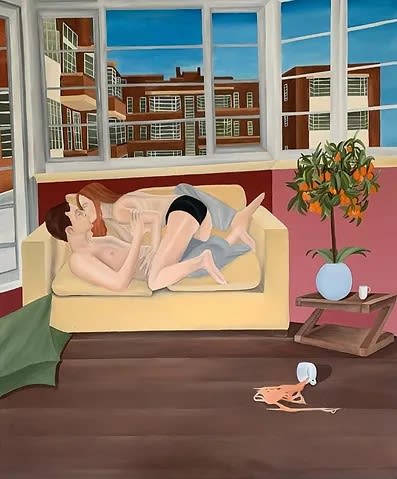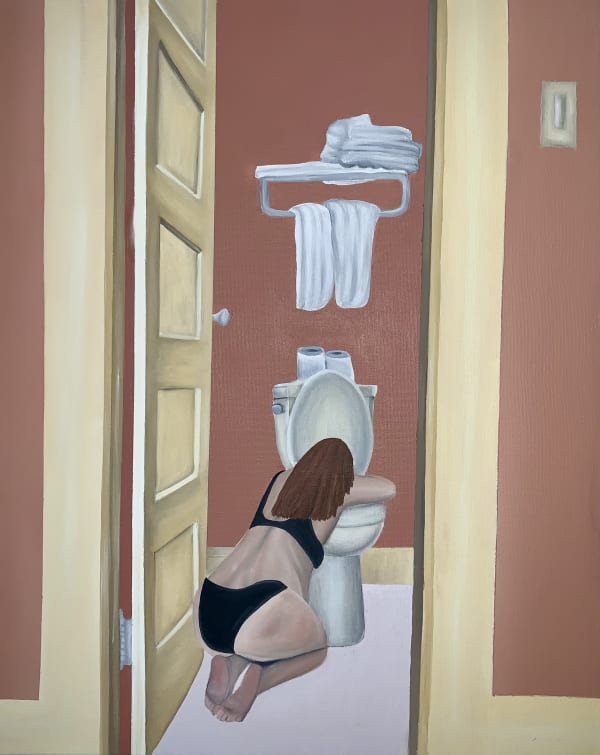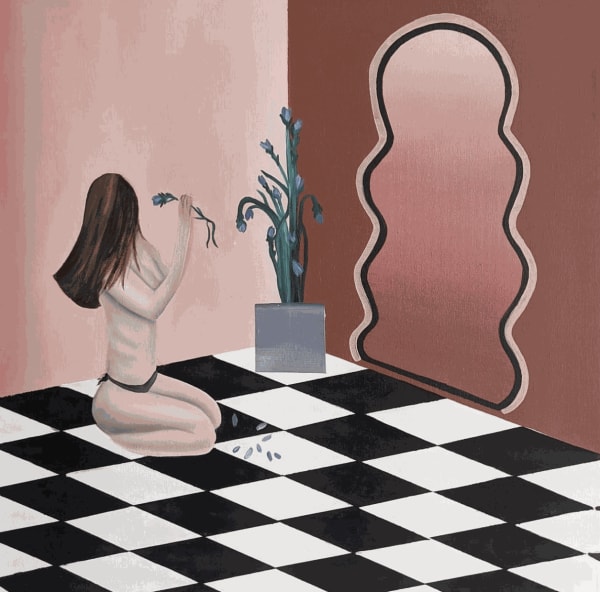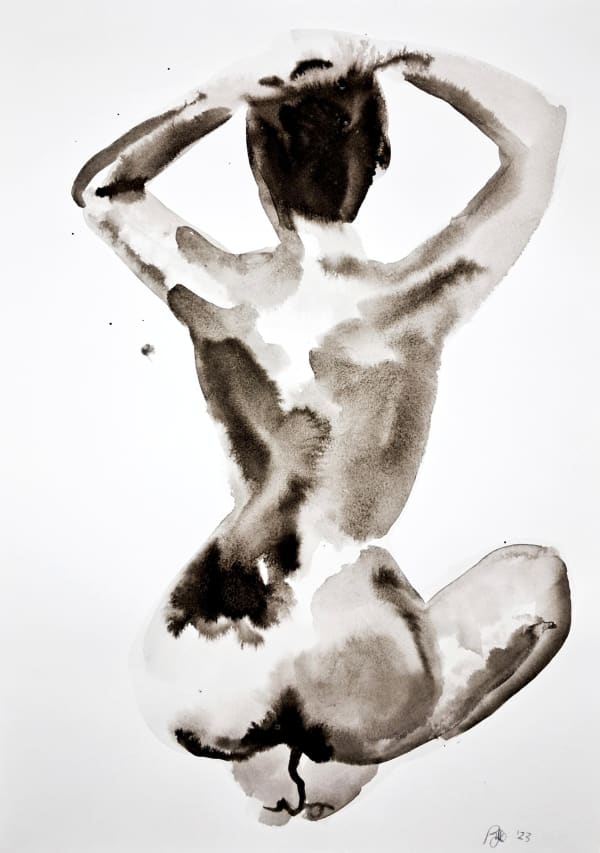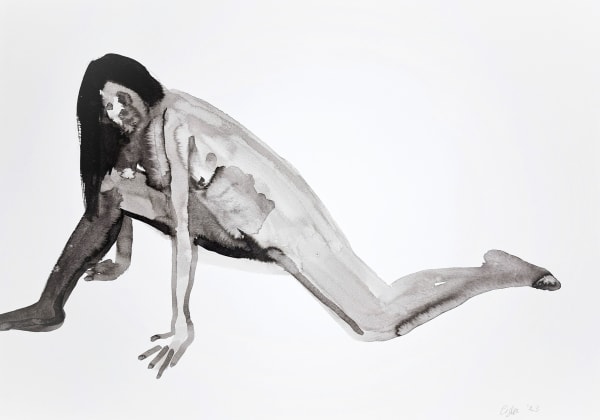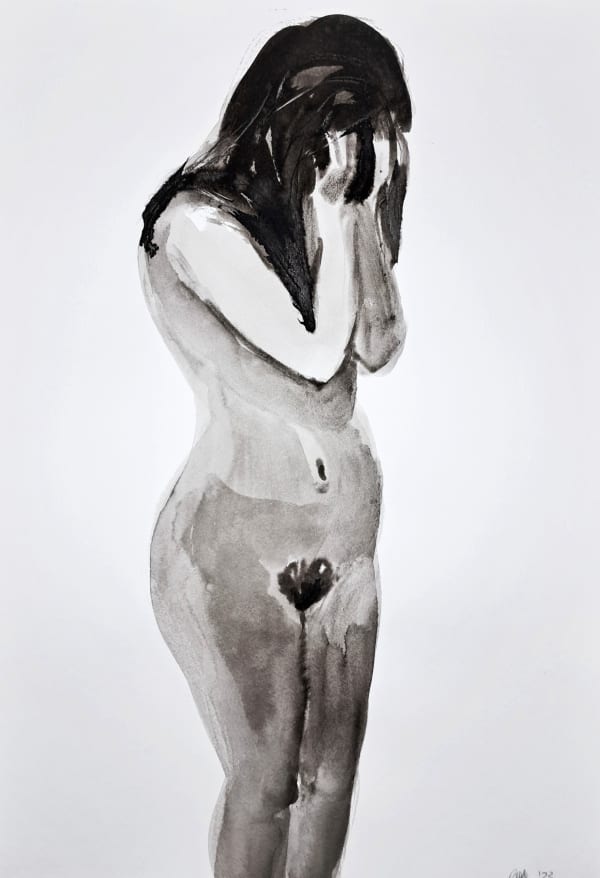-

-
Q&A WITH THE ARTIST
HS: On behalf of Black White Gallery I would like to say how excited we are to have you as a newly supported artist! Your work is refreshingly contemporary and yet still seems to hark back to a rich art history of figurative painting. Who / what are your main influences?
SGL: I was always surrounded by art growing up which was particularly encouraged by my parents; a lot of this was heavily influenced by music whether it was through album covers, fashion or painters that they introduced me to. My dad showed me Roy Litchenstein, when I was about 15, I was obsessed with him ever since. I love how he creates a story in a painting; always leaving the viewer with unanswered questions. This is then followed by Hockney, I love his use of colour and how he capture summer so perfectly – I think colour can be a visual representation of emotion, just like the weather and seasons. Up there would be Francesca Woodman too, way ahead of her time, I love the aesthetic of Yashica (the camera she used) and this abstract representation of herself and her body – a lot of my paintings are usually of myself, I find this resonates with me massively.HS: You obviously have a great sense of humour and this is apparent in both your paintings and their titles! What inspires the titles behind your works?SGL: I usually name the paintings before I’ve even created them. I like doing a play on words or writing up poems when I get a chance. I like the idea of translating words to imagery. A lot of it is just reflecting the everyday, I try to make the experience as universal as possible, because its most likely we have all experienced it or can relate in some way. A lot of my ideas do sometimes come from painful experiences, but I try to see the irony in it – a lot of the time the only way to get through difficult situations is to see the humour in it, this is something I try to re-create. Ironically, no one wants to lash to the neighbours, but we always end up accidentally doing it.
HS: Your paintings seem to have a recognisable style. Was that something you purposefully aimed for, or did it rather come with practice?SGL: Weirdly enough, I only ever found my style at the end of my degree, when I wasn’t even in the studio. It was during covid, and I think most people had an unpleasant time, I was finishing my degree from home in my bedroom and lockdown had made everyone feel isolated like never before. I found myself painting colourful imagery of myself or loved ones to keep me going as it was a dark time. I was trying to reflect reality in the opposite of how it was; a colourful paradox so it made it more bearable. Naturally, after that, I felt like I had found what my niche and just practiced it.HS: Please share some of your creative processes with us, from a starting point to a finished piece?SGL: It will usually start with an idea; an observation of some sort, or even a story that was told like a Chinese whisper – I will then write this down and create the story verbally before visually - then I will do brief sketches of how I intend the painting to be, I usually have to get my mates to help me stage photographs so I can get the composition of the body’s right – followed by creating the surroundings, I like to put people in situations, particularly rooms or spaces that could be considered desirable. I will then sketch these up on the canvas and begin to paint. Choice of colour is usually made up along the way with some sort of referencing to modern society. I tend to use warm colours followed by bits of foliage in most pieces.HS: Any other emerging artists you’d like to recommend to our readers?SGL: There’s so many to name I don’t know where to start, a lot of them I just find from Instagram; I really like Rebekah Rubalcaba work, she creates such a mood and I think as a woman its particularly relatable. I like Scout Zabinski’s stuff too, I think she captures colour and human form delightfully. My good friend too Lara Peach – makes figurative painting seem so effortless. Not necessarily emerging but a big fan of Hilary Pecis, her paintings pop.HS: Finally, how would you describe your work in two words?SGL: Inviting and Ironic OR a Surrealists Reality. -
ARTWORKS
-
EXPLICIT INTIMACY
Explicit Intimacy offers a unique and intimate insight into Corrie Wingate's artistic practice via a curated collection of ink life drawings. Rather than simple studies, Corrie’s revealing observations of the nude female are an exploration of emotion, feeling, and mood. Placing what is regarded as private into the realms of public experience, Corrie’s nude forms are laid bare for the viewer's immediate consumption. Unidentifiable and at times obscured, Corrie produces intimate yet estranged portraits that conceal as much as they reveal.
-
-

